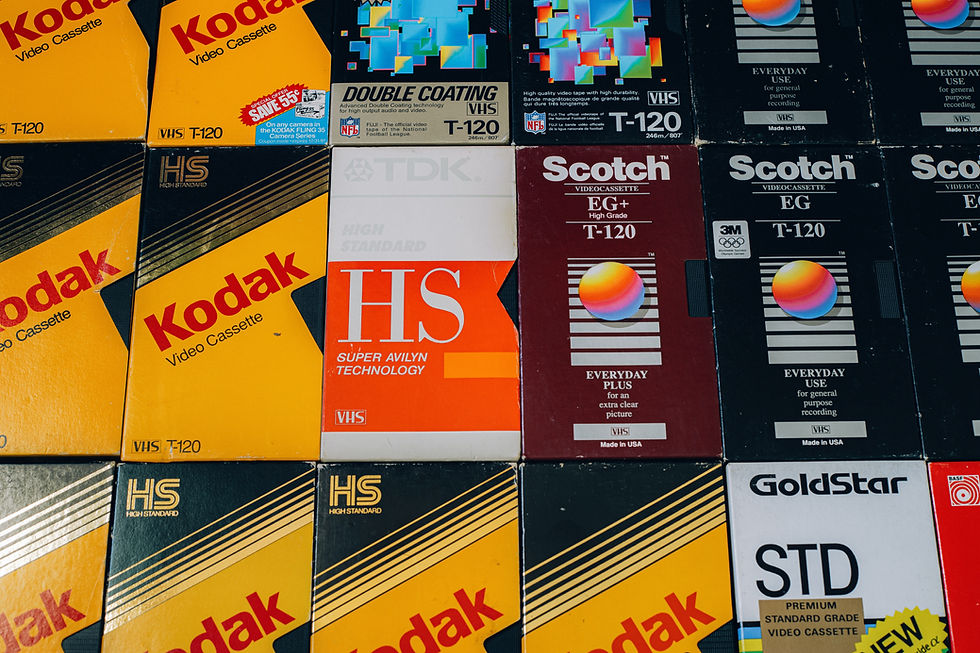Your Shelves Are Lying to You: Why Small Business Merchandising Sucks (and How to Fix It)
- Tara Bowdel
- Jul 22, 2023
- 3 min read
Updated: Jun 20
Let’s be honest: most small business owners didn’t get into business because they dreamt about sourcing vendors or optimizing shelf layouts.

You had a vision, a product, a mission. But somewhere between opening your doors and trying to keep the lights on, you realized something: merchandising and sourcing aren’t just background tasks—they're business killers when done wrong.
If your sales feel stagnant, your inventory’s gathering dust, or your online store looks like a garage sale, this article is for you. Let’s unpack the five brutal truths about sourcing and merchandising that sabotage small businesses—and what to do instead.
1. You’re Buying What You Like, Not What Sells
One of the most common sourcing mistakes? Business owners buy based on their personal taste. You love it, you think it’s cool, so you assume your customers will too. Except they don’t. Or worse, they do—but they’re not willing to pay what you paid.
Reality Check: Your job isn’t to stock what excites you. Your job is to stock what moves fast, fits your margins, and solves a real customer need. If you’re not letting data lead your buying decisions, you’re gambling—not sourcing.
Fix It:
Dive into your POS and eCommerce analytics to see what’s actually moving.
Poll your customers—especially your top spenders—on what they want more of.
Run small test orders before committing to big buys.
2. Your Vendor Relationships Are Lazy or Nonexistent
Here’s a hard truth: if your suppliers don’t fear losing your business, you’re probably not negotiating hard enough. Too many small businesses treat vendors like vending machines—submit an order, get a shipment. No questions asked.
That’s not a relationship. That’s a missed opportunity.
Fix It:
Get to know your reps. Be clear about your needs and your growth goals.
Ask for co-op marketing dollars, exclusive products, or lower MOQs (minimum order quantities).
Always be scouting better options. Loyalty is earned—not owed.

3. Your Store Layout (or Website) Is Working Against You
Let’s talk merchandising. Whether you run a brick-and-mortar store or an online shop, poor presentation kills sales.
In-store? Cluttered displays, inconsistent signage, and confusing layout = customers walking out.
Online? Bad photos, no clear call to action, and buried bestsellers = abandoned carts.
Fix It:
Use the “power of the pause”: create focal points that stop shoppers in their tracks.
Merchandise by solution, not just category (e.g., “Cold Weather Essentials” vs. “Jackets”).
On your website, invest in high-quality product photography and killer copy. If your product description sounds like a factory spec sheet, you’re doing it wrong.

4. You’re Holding Onto Dead Inventory Like It’s Treasure
You know that feeling when you look at a product that’s been sitting on your shelf for 9 months and say, “Maybe it’ll sell next season”?
Stop.
Dead inventory is silent sabotage. It ties up cash, kills your margins, and clutters your merchandising. Every inch of your shelf (or website) is prime real estate. Don’t waste it on products that aren’t earning their keep.
Fix It:
Set hard sell-through time limits. If it hasn’t moved in 60–90 days, clear it out.
Bundle slow movers with hot sellers or create themed promotions to move stale stock.
Get creative: “mystery boxes,” buy-one-get-one deals, or loyalty perks.
5. You Have No Clear Merchandising Strategy—You’re Just Winging It
Winging it might feel “scrappy” and entrepreneurial, but it’s a recipe for chaos when it comes to product strategy. If your product assortment is all over the place, your customers won’t know what you stand for—or what you’re selling.
You don’t need more products—you need a plan.
Fix It:
Build a merchandise strategy aligned with your brand, your customer, and your sales goals.
Categorize your products into core (always stocked), seasonal, and experimental.
Audit your assortment monthly: What’s performing? What’s just taking up space?
People don’t just buy products—they buy how products are presented.

The best businesses make shopping feel intuitive, exciting, and friction-free. If your displays look like an afterthought, your customers will treat your business like one.
Let’s Recap: Here’s How to Get Sourcing and Merchandising Right
Problem | Fix |
Buying what you like | Buy what sells, not what excites you personally |
Passive vendor relationships | Negotiate better, demand more, explore options |
Poor merchandising | Improve layout, signage, displays, photos |
Dead inventory | Move it fast—bundle, promote, or discount |
No strategy | Build a plan with categories, KPIs, and a monthly audit |
Final Thought: Your Store (Online or Offline) Is Telling a Story—Is It One People Want to Hear?
Whether it’s your homepage or your front window display, your merchandising tells people what kind of business you are. Cheap and chaotic? Sleek and selective? Boring and bloated?
When your sourcing is strategic and your merchandising is intentional, everything changes—customer perception, product velocity, and profitability.
So don’t let your shelves lie to you. Build a system that sells.



Comments